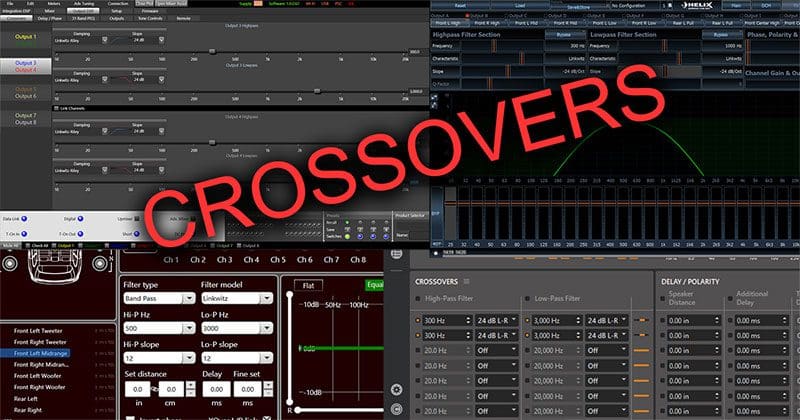As we continue our deep-dive into the functions of car audio digital signal processors, we’ve reached the topic of crossovers. Many people overlook the importance of configuring crossovers properly to achieve a smooth frequency response. Let’s take a look at what a crossover does and why your technician must set them correctly to protect your speakers.
What Is a Crossover?
All speakers, no matter their size, have limits in terms of their ability to reproduce low-frequency audio information at high levels. For small speakers like a tweeter or midrange driver, attempting to produce bass is a recipe for disaster. Crossovers are used to limit the audio information being sent to a speaker above or below a set frequency.
High-pass crossovers allow information higher than the set frequency to go to the speaker. Low-pass filters do the opposite – they pass audio information below the crossover frequency.
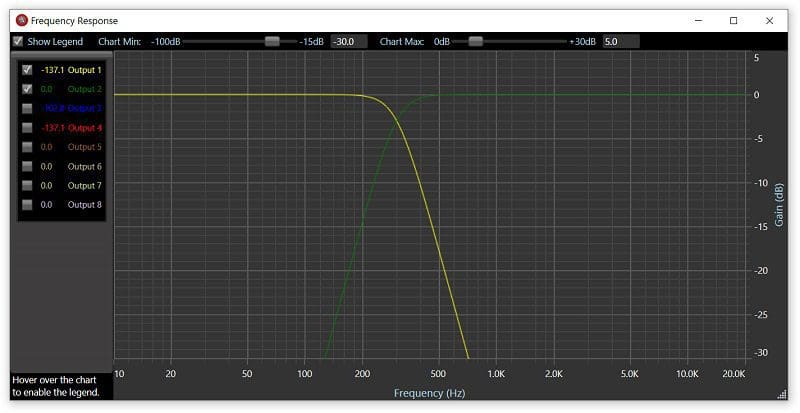
High-pass filters are used to prevent bass and midrange information from being sent to tweeters. Low-pass filters are used to prevent midrange and high-frequency information from being sent to a subwoofer. For midbass and midrange speakers, we combine a high- and low-pass filter to create what’s known as a bandpass filter. A bandpass filter has limited low- and high-frequency information.
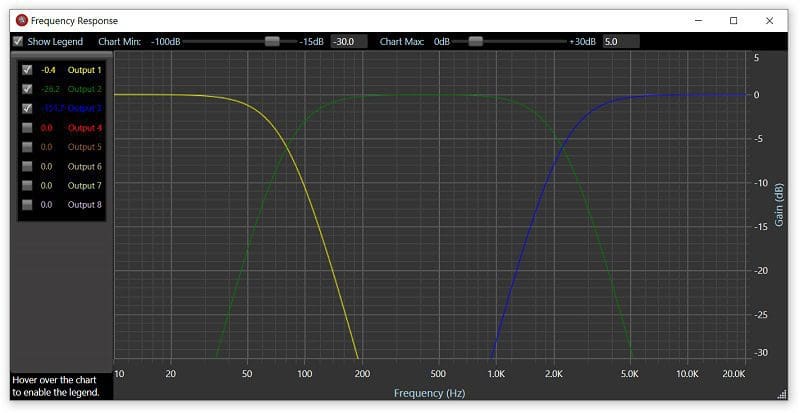
Crossovers have three defining characteristics: the crossover frequency, the attenuation rate and the type of crossover response curve.
Crossover Frequency
Depending on the response curve chosen, the crossover frequency defines the -3 dB or -6 dB point for the filter. When setting crossovers between midbass woofers, midrange speakers and tweeters, we want the output to sum flat – as though there were no crossover, and we had a single speaker that would play through the entire audio range. To achieve this, we need the crossover frequencies for both speakers to be the same.
Crossover Slope
The slope describes how fast audio signals in the stop-band are attenuated. A crossover isn’t a brick wall or a switch. Say you set a high-pass crossover at 3 kHz for a tweeter. You still get output at 2.5 kHz and 2.0 kHz. The rate at which that output attenuates is the slope. The slope is described by how much the output is reduced per octave away from the crossover point. The most commonly used slopes are -12 and -24 dB/octave.
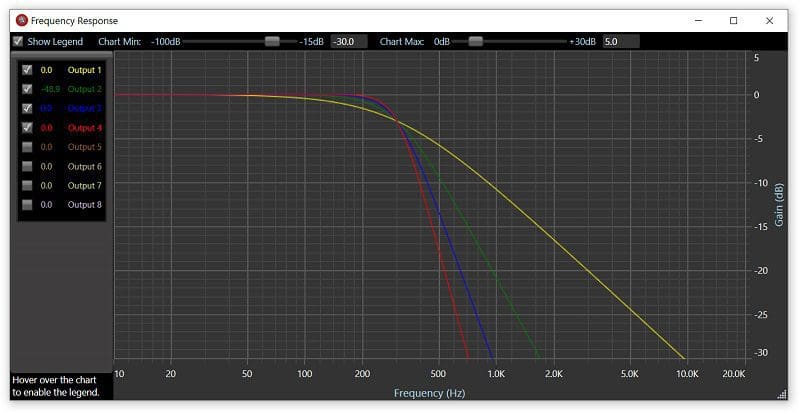
Crossover Response Options
Some companies describe the shape of the filter response using different terms – alignment, damping or simply crossover type. These options describe the behavior of the filter around the crossover point and how the output sums with an adjacent filter. This is a topic that could fill a textbook, but suffice it to say that some types work better in car audio applications than others. Your technician should know what to use to achieve the flattest response and best speaker radiation pattern around the crossover frequency.
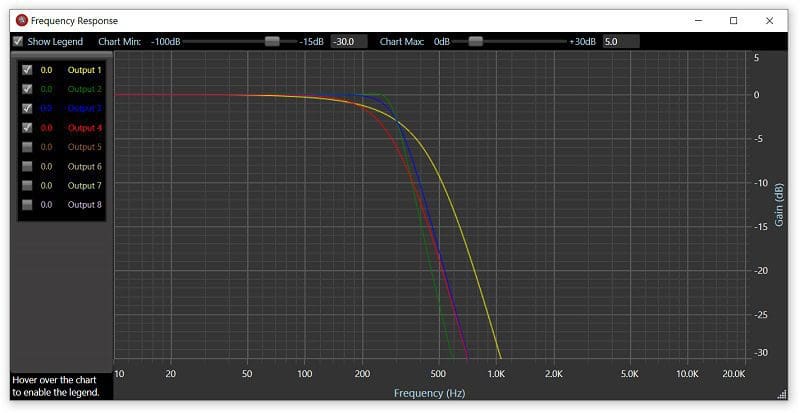
Choosing the Right DSP
Most of the high-quality digital signal processors on the market have very flexible crossover frequency, slope and response options. Where you need to pay attention is in choosing a DSP that has enough channels for your system, and in ensuring that any channel can be configured with any type of crossover. In some cases, manufacturers link channels together. While usually acceptable for conventional systems, linking presents limits when you want to drive a center channel speaker.
Lastly, and most importantly, you want to choose a technician who has the tools (a calibrated RTA) and the training to ensure that the crossovers that he or she configures for your audio system protect speakers adequately. Of course, the system also needs to be designed using speakers that complement each other and deliver smooth sound distribution throughout the vehicle. Start with your local specialty mobile enhancement retailer. Ask to hear some of their demo vehicles. Ask what RTA they use, how long they take to configure a system, and how they ensure it’s adjusted to suit your listening preferences.
This article is written and produced by the team at www.BestCarAudio.com. Reproduction or use of any kind is prohibited without the express written permission of 1sixty8 media.

